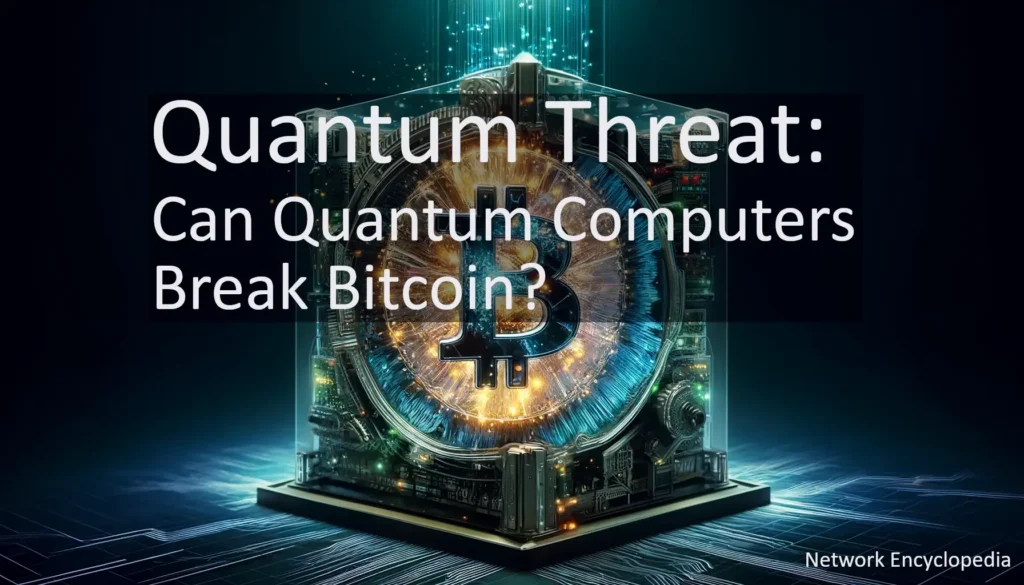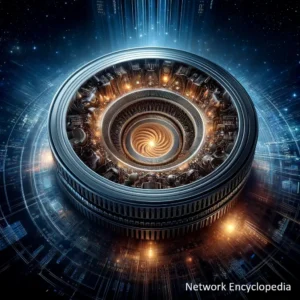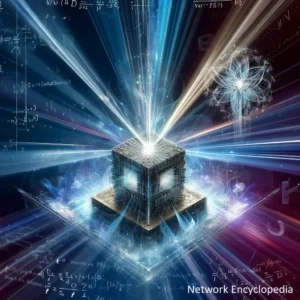In the realm of digital finance, Bitcoin has established itself as a leading cryptocurrency, lauded for its security measures which hinge on cryptographic algorithms like SHA-256. However, the rapid advancement of quantum computing presents a new array of challenges and threats. This article delves into the intersection of quantum computing and Bitcoin, particularly focusing on the potential of quantum technology to disrupt Bitcoin’s cryptographic foundations.
We will start by understanding the basics of quantum computing and how its principles differ fundamentally from classical computing. Following this, we’ll explore the specific vulnerabilities of the SHA-256 algorithm used by Bitcoin to quantum attacks. A significant part of our discussion will center on whether current quantum computers could realistically crack Bitcoin wallet private keys, a feat that would jeopardize the security of billions in assets.
Further, we will assess the current state of quantum computing technology and its projected growth to understand the timeline we might be looking at before such a threat becomes imminent. The Bitcoin community is not standing still, and we will review the preventative steps being taken, including the shift towards quantum-resistant cryptographic methods.
Through this exploration, we aim to shed light on the potential future scenarios for Bitcoin and other cryptocurrencies in the face of quantum advancements, providing a well-rounded view of the technological arms race between cryptographic security and quantum computing capabilities.
Table of Contents:
- Introduction to Quantum Computing and Bitcoin
- The Vulnerability of SHA-256 to Quantum Attacks
- Cracking Bitcoin Wallets: A Quantum Perspective
- Quantum Computing’s Current State and Projections
- Preventative Measures and Quantum-Resistant Cryptography
- Implications for Bitcoin and Other Cryptocurrencies
- Conclusion: The Future Intersection of Quantum Computing and Bitcoin
- References

1. Introduction to Quantum Computing and Bitcoin
Quantum Computing: A Brief Overview
Quantum computing represents a revolutionary approach to processing information, utilizing the principles of quantum mechanics, the science that governs the behavior of matter and energy at the smallest scales. Unlike classical computers, which use bits as the smallest unit of data (either 0 or 1), quantum computers use quantum bits, or qubits, which can represent and store information in both 0 and 1 simultaneously thanks to a principle called superposition.
The development of quantum computing began in earnest in the 1980s with theorists like Richard Feynman and David Deutsch, who proposed that a quantum computer would have profound advantages for certain types of calculations over classical computers. This includes tasks involving integer factorization, database search algorithms, and simulations of quantum physical processes, which are notoriously difficult for classical computers to handle.
Another key feature of quantum computing is entanglement, a quantum phenomenon where qubits become interconnected and the state of one (whether it is a 1, a 0, or both) can depend on the state of another. This allows quantum computers to process complex datasets much more efficiently than classical computers. While still in the relatively early stages of development, quantum computing has the potential to revolutionize industries that rely on large-scale data analysis, complex simulations, and cryptography.
How Bitcoin Utilizes Cryptography
Bitcoin, the first decentralized cryptocurrency, utilizes cryptography to secure transactions, control the creation of additional units, and verify the transfer of assets. Its security model is fundamentally based on cryptographic algorithms.
- Bitcoin Wallets and Cryptographic Keys: A Bitcoin wallet consists of a public key and its corresponding private key, which are generated together. The public key, which can be shared with others, is used to receive Bitcoin. The corresponding private key must be kept secret as it is used to sign transactions and thus prove ownership of the Bitcoin associated with the public key. This use of key pairs is rooted in asymmetric cryptography, where the ability to decipher encrypted information is divided between a publicly disclosed key and a private key known only to the receiver of the message.
- Mining and Proof of Work: Bitcoin also uses a process called mining to issue new coins and secure the network. Mining involves solving a computationally difficult puzzle that requires trial and error to validate and add new transactions to Bitcoin’s public ledger, the blockchain. This puzzle is based on the SHA-256 hashing algorithm. Miners compete to find a hash that meets certain criteria (a target), and the first miner to solve the puzzle adds the next block to the blockchain and is rewarded with newly minted Bitcoins. This process is not only crucial for minting new coins but also for maintaining the decentralized security and integrity of the Bitcoin ledger.

The reliance of Bitcoin on cryptographic principles like these not only helps ensure its security against conventional attacks but also makes it a notable case study for the potential impact of quantum computing. As quantum computing continues to advance, it poses a potential threat to the cryptographic systems that underpin Bitcoin, particularly through its potential ability to break the cryptographic algorithms used for generating public and private key pairs. This foundational aspect sets the stage for our exploration of quantum threats to Bitcoin, diving deep into the vulnerabilities and the quantum mechanics at play that could one day disrupt this digital economy.
2. The Vulnerability of SHA-256 to Quantum Attacks
Technical Explanation of SHA-256
SHA-256, part of the Secure Hash Algorithm 2 (SHA-2) family, is a cryptographic hash function designed by the National Security Agency (NSA) and published in 2001. A hash function like SHA-256 is designed to take an input (or ‘message’) and return a fixed-size string of bytes. The output, known as the hash, is typically a 256-bit (32-byte) string that is a nearly unique representation of the input data.
The properties that make SHA-256 effective for security purposes include:
- Deterministic: The same message always results in the same hash.
- Quick computation: The hash can be computed quickly, which is essential for processing large volumes of data.
- Irreversibility: It should be computationally infeasible to generate the original input by looking at the hash output.
- Small changes to the input drastically change the output: This is known as the avalanche effect. Even a tiny change in the input should produce an unrecognizable and entirely different output.
- Collision-resistant: It should be highly unlikely (nearly impossible) to find two different inputs that produce the same output hash.
In the context of Bitcoin, SHA-256 is pivotal for the mining process and in the creation of Bitcoin addresses, which are derived from public keys using both SHA-256 and RIPEMD-160.

How Quantum Computers Could Potentially Break SHA-256
The primary quantum threat to SHA-256 is not its ability to find collisions (two different inputs that produce the same hash), which is more relevant to cryptographic signatures but rather its potential to accelerate the mining process to a disruptive degree.
- Grover’s Algorithm: Quantum computers can leverage an algorithm known as Grover’s Algorithm, which is used for searching an unsorted database. In the context of SHA-256, Grover’s Algorithm can be applied to perform what’s called an “inverse hash”: given a hash output, it tries to find an input that matches this output. For SHA-256, which produces a 256-bit output, a classical computer would need to perform on average 2^255 operations to find a match, a practically impossible task given current technology. However, Grover’s Algorithm can theoretically find the correct input with only about 2^128 operations, which squares the root of the possible inputs.
- Impact on Bitcoin Mining: Mining involves finding a hash that is below a certain target, and Grover’s Algorithm could theoretically be used to speed up this proof-of-work process. A quantum computer applying Grover’s Algorithm could potentially mine blocks much faster than classical computers. However, it is important to note that current quantum computers do not yet have enough qubits to effectively run Grover’s Algorithm against cryptographic targets of this size. Moreover, doubling the number of qubits approximately squares the speed of the quantum computer due to the exponential nature of quantum computing.Comparatively, even a very fast traditional computer system or network currently aligns with the designed average block time due to the Bitcoin network’s difficulty adjustment. In a hypothetical scenario where a quantum computer could run Grover’s Algorithm efficiently, it could drastically shorten the time to solve the proof-of-work, leading to faster than intended block validation and potentially centralizing mining power or causing security vulnerabilities.

The Bitcoin community is aware of these potential quantum vulnerabilities and discussions around post-quantum cryptography and other defensive measures are ongoing to ensure future resilience against quantum attacks. This exploration is crucial as it sets the stage for understanding not only the current state of quantum risk but also the necessary steps to mitigate such threats as quantum technology evolves.
3. Cracking Bitcoin Wallets: A Quantum Perspective
Feasibility of Quantum Computers Cracking Private Keys
The security of Bitcoin wallets hinges on the robustness of cryptographic algorithms, primarily through the use of elliptic curve digital signature algorithm (ECDSA) for generating public and private key pairs. Each Bitcoin wallet contains a private key, which is used to sign transactions and thus prove ownership of the bitcoins therein. The corresponding public key is derived from this private key and is used to generate Bitcoin addresses.
- Quantum Computing Threat to ECDSA: The primary threat to Bitcoin’s ECDSA from quantum computing comes from Shor’s Algorithm. This quantum algorithm can efficiently solve discrete logarithm problems and integer factorization, which are the foundational math problems upon which RSA and ECDSA security are based. In classical computing, breaking ECDSA to derive a private key from a public key is computationally infeasible due to the enormous time and resource requirements. However, a sufficiently powerful quantum computer using Shor’s Algorithm could theoretically perform these calculations much more quickly, potentially in polynomial time compared to the exponential time required by classical computers. This ability could allow a quantum computer to derive a private key from a public key, thereby compromising the security of Bitcoin wallets exposed through their public keys.
- Current State of Quantum Capabilities: Despite these theoretical threats, the practical application of quantum computers capable of running Shor’s Algorithm to break ECDSA is not yet a reality. The number of qubits required for such tasks is far beyond what current quantum technology can provide, and maintaining quantum coherence over enough qubits to perform these calculations without errors remains a significant technical challenge.

Technical Analysis of Current Cryptographic Practices in Bitcoin
Bitcoin’s cryptographic system employs several layers of security practices:
- Hash Functions: Bitcoin uses the SHA-256 cryptographic hash function not just in mining (as part of the proof-of-work algorithm) but also to enhance the security of generating Bitcoin addresses. A Bitcoin address is created by taking the public key and double-hashing it using SHA-256 and then RIPEMD-160. This method provides an additional layer of security by not exposing the public key directly until coins are spent (the public key is revealed in the blockchain once the output is spent).
- Signature Algorithm: As mentioned, Bitcoin uses the ECDSA for its digital signatures. When a transaction is made, the sender uses their private key to sign a hash of the transaction details, and this signature is verified against the sender’s public key by the miners. This process ensures that only the holder of the private key can authorize a transaction, which is critical for maintaining ownership security.
- Address Format and Use: Bitcoin addresses, derived from the hashed public keys, add an extra layer of obfuscation which protects user identities and increases security. The addresses are also typically used only once to receive funds and any remaining balance is transferred to a new address as change, a practice which helps maintain privacy and security.
As quantum computing technology progresses, the Bitcoin community is considering several potential modifications to enhance security against quantum threats. Proposals include moving to post-quantum cryptographic algorithms that are considered resistant to quantum attacks. The implementation of these changes would require consensus within the community and careful coordination to update the protocol.
In conclusion, while the threat from quantum computing to Bitcoin wallet security is real and potentially severe, it remains a future concern. Current cryptographic practices in Bitcoin offer robust security against classical attacks and the community remains vigilant about advancing quantum technology, preparing to upgrade cryptographic practices as necessary to maintain security.
4. Quantum Computing’s Current State and Projections
Current Capabilities of Quantum Computers
As of 2024, quantum computing is still largely in the experimental and development phases, but significant progress has been made in recent years. The current state of quantum computing is characterized by a few key developments:
- Qubit Count and Coherence Time: Modern quantum computers have seen an increase in both the number of qubits and the duration for which these qubits can maintain their quantum state (coherence time). Companies like IBM, Google, and Rigetti are leading the way, with systems that feature qubit counts ranging from a few dozen to over a hundred. However, the coherence times still pose limitations, as qubits are prone to error and require error correction techniques to produce reliable results.
- Quantum Supremacy: In 2019, Google announced that its quantum computer, Sycamore, achieved quantum supremacy by performing a specific calculation faster than any classical computer could. This was a significant milestone, demonstrating that quantum computers could potentially outperform traditional computing systems in certain tasks.
- Quantum Volume: Quantum volume, a metric introduced by IBM, measures the overall capabilities and error rates of a quantum computer, considering factors like qubit count, connectivity, and gate fidelity. As of 2024, the quantum volume metric has been improving, indicating enhanced performance and reliability of quantum computations.
- Commercial Quantum Computing Services: Several companies have started offering quantum computing as a service (QCaaS) via cloud platforms. This allows developers and researchers to run algorithms on real quantum hardware, fostering innovation and exploration within the field without the need for direct access to quantum computers.

Expert Predictions for Quantum Computing Development
The future trajectory of quantum computing is subject to various expert predictions, reflecting both optimism and practical challenges:
- Scaling Qubits: Experts predict continued advances in increasing the number of qubits while also enhancing qubit stability through improved error correction methods. The goal is to reach “quantum advantage,” where quantum computers can solve practical problems faster and more efficiently than classical computers in a wide range of applications.
- Technological Breakthroughs: Breakthroughs in materials science and quantum theory may lead to the development of new types of qubits that are less prone to error or that can operate at higher temperatures, reducing the complexity and cost of quantum computers.
- Integration with Classical Systems: It is expected that quantum computing will not replace classical computing but will rather complement it. Hybrid systems that leverage both traditional and quantum computing resources are likely to become more prevalent, especially in tackling complex computational problems like drug discovery, optimization, and materials science.
- Industry-Specific Applications: By the end of the decade, experts anticipate that specific industries such as pharmaceuticals, materials engineering, and finance will begin adopting quantum computing to solve industry-specific problems that are intractable with classical computers.
- Regulatory and Ethical Considerations: As quantum computing impacts more sectors, regulatory and ethical considerations will become increasingly important. Issues related to data privacy, cybersecurity, and even international regulations regarding the use of quantum computing in critical sectors will require thoughtful engagement from policymakers, businesses, and the scientific community.
In conclusion, while significant hurdles remain, the momentum behind quantum computing continues to build. The developments over the next few years are crucial in determining how quickly and effectively quantum computers will transition from experimental tools to practical, problem-solving machines. The community remains cautiously optimistic, with a watchful eye on both the technological advancements and the broader implications of quantum computing.
5. Preventative Measures and Quantum-Resistant Cryptography
Preparing for Quantum Threats in the Bitcoin Community
As awareness of quantum threats grows, the Bitcoin community is actively exploring strategies to protect the network against potential quantum computing attacks. These efforts are primarily focused on enhancing the cryptographic foundations of Bitcoin to ensure that it remains secure even as quantum technologies advance.
- Research and Development: Research into quantum-resistant cryptographic methods is ongoing, with several proposals being discussed within the community. This includes working with cryptographic experts and engaging in partnerships with research institutions to stay ahead of quantum advancements.
- Proposed Protocol Upgrades: There are discussions around future Bitcoin protocol upgrades that could incorporate quantum-resistant algorithms. Such upgrades would likely require broad consensus across the network and would be implemented gradually to ensure stability and security.
- Monitoring Quantum Progress: The community is closely monitoring the development of quantum computing technologies. By understanding the capabilities of emerging quantum systems, Bitcoin developers can better time and tailor their responses to the quantum threat.
Quantum-Resistant Cryptographic Algorithms
Several cryptographic algorithms are considered resistant to quantum attacks, and some are being evaluated for their potential inclusion in Bitcoin’s security protocol:
- Lattice-Based Cryptography: This approach is promising for its resistance to both classical and quantum attacks. Lattice-based systems use structures in high-dimensional space that are difficult for quantum algorithms to break.
- Hash-Based Cryptography: Hash-based signatures are another avenue being explored. These are generally simple, involve few assumptions about computational hardness, and are currently believed to be secure against quantum attacks.
- Multivariate Quadratic Equations: Cryptographic systems based on the hardness of solving systems of multivariate quadratic equations are also seen as a potential quantum-resistant solution.
- Code-Based Cryptography: Relying on the decoding of certain types of error-correcting codes, this method is known for its security and efficiency and is another candidate for quantum-resistant cryptography.
Each of these alternatives comes with its trade-offs in terms of efficiency, implementation complexity, and security. The Bitcoin community’s challenge will be to choose an approach that provides robust security without compromising the network’s performance or decentralization.
6. Implications for Bitcoin and Other Cryptocurrencies
Quantum Breakthroughs and Bitcoin’s Future
The potential of quantum computing to break the cryptographic security that underpins Bitcoin could have profound implications:
- Security and Trust: If quantum computers reach a point where they can break Bitcoin’s cryptographic protocols, the trust in Bitcoin’s security could be significantly undermined, potentially leading to a decrease in user adoption and value.
- Market Volatility: Anticipation or actual proof of quantum capabilities could lead to market instability. Investors might react preemptively to news of quantum developments, leading to sharp price fluctuations.
- Forced Evolution: A quantum breakthrough would likely force Bitcoin to undergo significant changes to its core cryptographic practices, which could be a complex and contentious process.
Broader Implications for the Cryptocurrency Market
- Widespread Vulnerability: Most current cryptocurrencies rely on similar cryptographic principles and would face similar vulnerabilities to quantum attacks. The entire industry would need to move towards quantum-resistant technologies.
- Innovation and New Standards: This shift could spur innovation, with new blockchain technologies and cryptographic methods potentially catalyzing a new era in the cryptocurrency market.
- Regulatory Attention: Quantum threats could lead to increased regulatory scrutiny as governments seek to ensure the stability and security of digital financial systems.

In conclusion, the intersection of quantum computing and cryptocurrency represents both a challenge and an opportunity. While the threat is not immediate, proactive measures and continuous innovation are essential to ensure that cryptocurrencies can adapt and thrive in a future where quantum computing is the norm.
7. Conclusion: The Future Intersection of Quantum Computing and Bitcoin
Throughout this article, we have explored the significant implications of quantum computing for Bitcoin and the broader cryptocurrency ecosystem. Here are the main takeaways:
- Quantum Vulnerability: Quantum computing poses a potential threat to the cryptographic foundations of Bitcoin, particularly through its ability to potentially break the ECDSA algorithm used to secure Bitcoin wallets.
- Current State and Predictions: While current quantum computers do not yet have the capability to break Bitcoin’s cryptography, advancements in quantum technology are ongoing, and the community must prepare for future threats.
- Quantum-Resistant Measures: The Bitcoin community is actively exploring and discussing the integration of quantum-resistant cryptographic algorithms to safeguard against future quantum threats.
- Broader Market Implications: The entire cryptocurrency market could be impacted by quantum developments, necessitating a widespread shift to new cryptographic standards.
Final Thoughts on the Evolving Landscape of Cryptography and Digital Currency
The interplay between quantum computing and digital currency is a fascinating example of how cutting-edge technology impacts financial systems. As quantum technology continues to evolve, it will challenge existing cryptographic paradigms and potentially redefine security and trust in digital transactions. This evolving scenario demands proactive measures from the cryptocurrency community to embrace and integrate quantum-resistant technologies, ensuring that trust and security, the bedrock of digital currency, remain uncompromised.
The journey ahead will not only involve technological upgrades but will also require a consensus-driven approach to adopt these changes across networks, ensuring that digital currency systems can withstand the quantum era. This ongoing dialogue between technology and finance will likely yield innovative solutions that fortify digital assets against future threats while fostering an environment of continuous improvement and adaptation.
8. References
To support the exploration of quantum computing’s impact on Bitcoin and to aid further research, the following resources are recommended:
- Books:
- “Quantum Computing Since Democritus” by Scott Aaronson
- “Quantum Computation and Quantum Information” by Michael A. Nielsen and Isaac L. Chuang
- “The Age of Cryptocurrency: How Bitcoin and Digital Money are Challenging the Global Economic Order” by Paul Vigna and Michael J. Casey
- RFCs:
- Research Papers and Articles:
- “Quantum attacks on Bitcoin, and how to protect against them” (Lorenz, et al., 2017, arXiv, Cornell University)
- “The Impact of Quantum Computing on Present Cryptography” (Vasileios Mavroeidis, Kamer Vishi, Mateusz D. Zych, Audun Jøsang, Academic Paper, 2018, arXiv, Cornell University)
- Websites: